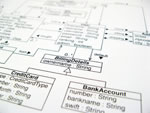
Data Classification
Data classification is increasingly important to security and IT professionals who often struggle to identify and manage risk to their sensitive data. Data classification helps organizations determine what types of controls are required to protect data from theft and abuse, and is an essential part of regulatory compliance initiatives. Without automated data classification, it is nearly impossible to keep pace with growing amounts of data and the dynamic nature of IT environments.
 Discover Instances of Data for Classification
Discover Instances of Data for Classification
Accurately mapping where data assets are located is an essential first step in data classification. Automated database discovery can be used to scan networks to discover new database installations and ensure awareness of these assets. Database discovery also helps with asset management and is an important first step for ensuring that "rogue" database servers and unauthorized copies of sensitive data do not exist on the network.
Detect Systems that Contain Sensitive Data Types
Once the locations of databases and file servers are known, organizations need to define which data to look for when conducting classification scans. By targeting specifying data types, organizations can determine which databases and files are within the scope of a security or regulatory compliance project. Common data types include financial data, credit card data, personally identifiable information, national identity numbers (e.g., US Social Security numbers) and credentials (i.e., user names and passwords). Companies may also need to define custom data types that relate to their specific line of business or how they code and store information.
Continuously Track, Audit and Protect Sensitive Data
Data is constantly changing and classifications are static snapshots, so it is important to be able to schedule and repeat classification scans to ensure ongoing awareness of sensitive data. Regularly updated classification results enable organizations to create and enforce security policies based on data type that remain relevant even as data changes and moves. Classification scan results can be used for reporting as well as correlation with other security and compliance information, such as vulnerability assessment results.
Related Products:
| Database Security | |
|---|---|
| Product Name: | Capabilities: |
| SecureSphere Database Activity Monitoring |
|
| SecureSphere Database Firewall |
|
| SecureSphere Discovery and Assessment Server |
|
| File Security | |
|---|---|
| Product Name: | Capabilities: |
| SecureSphere File Activity Monitoring |
|
| SecureSphere File Firewall |
|
| User Rights Management for Files |
|
